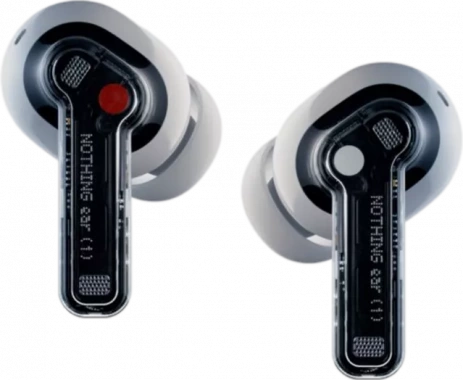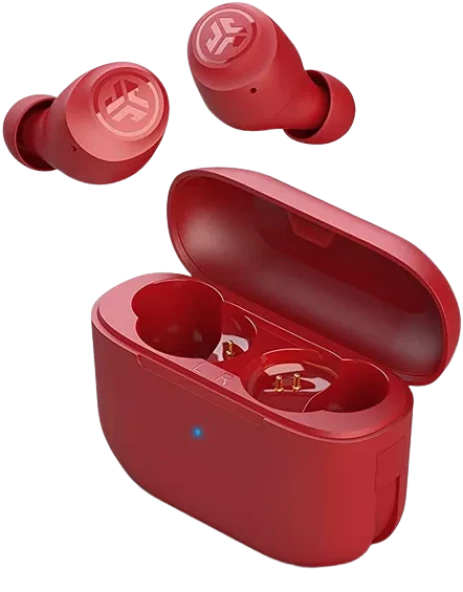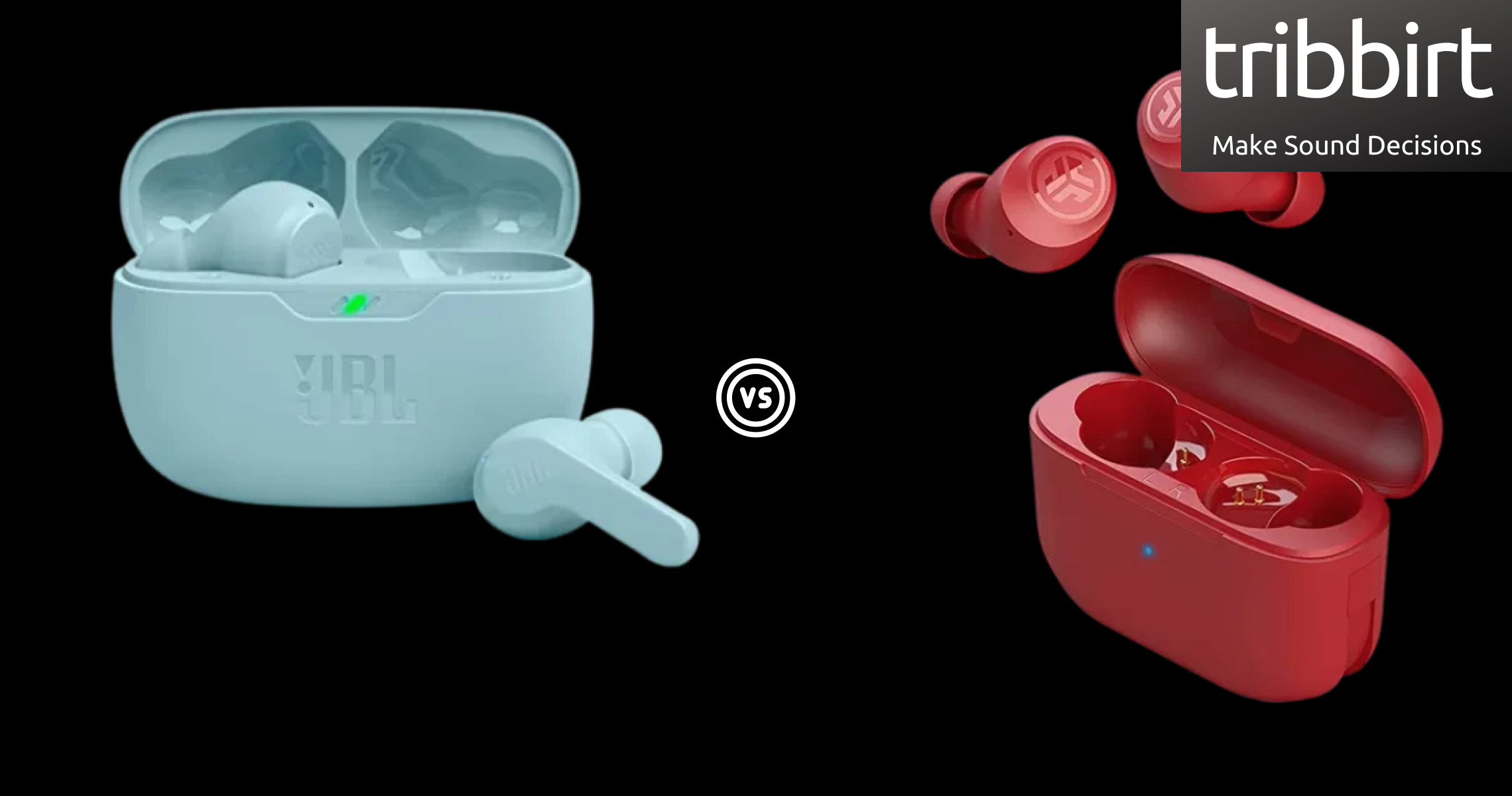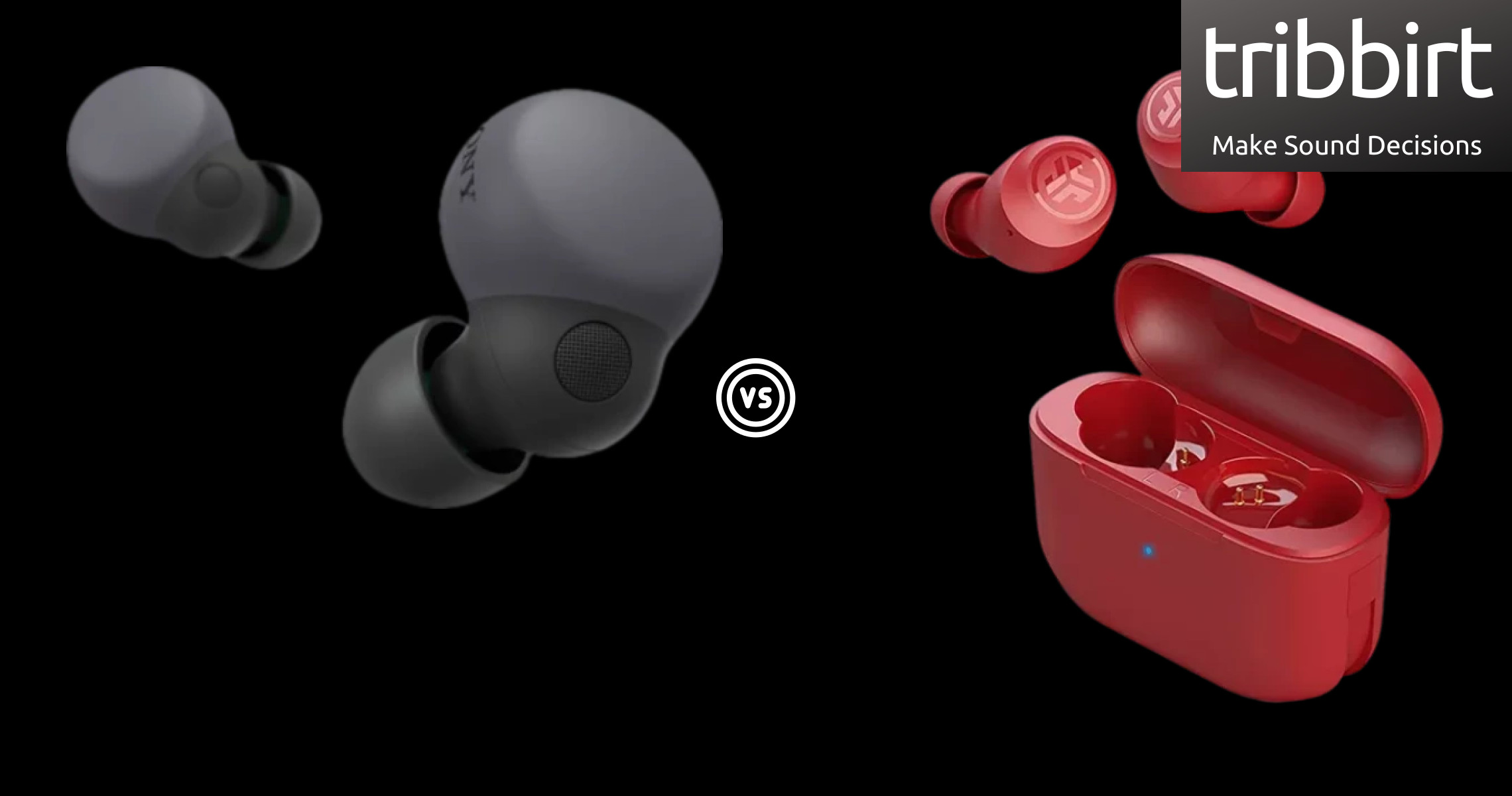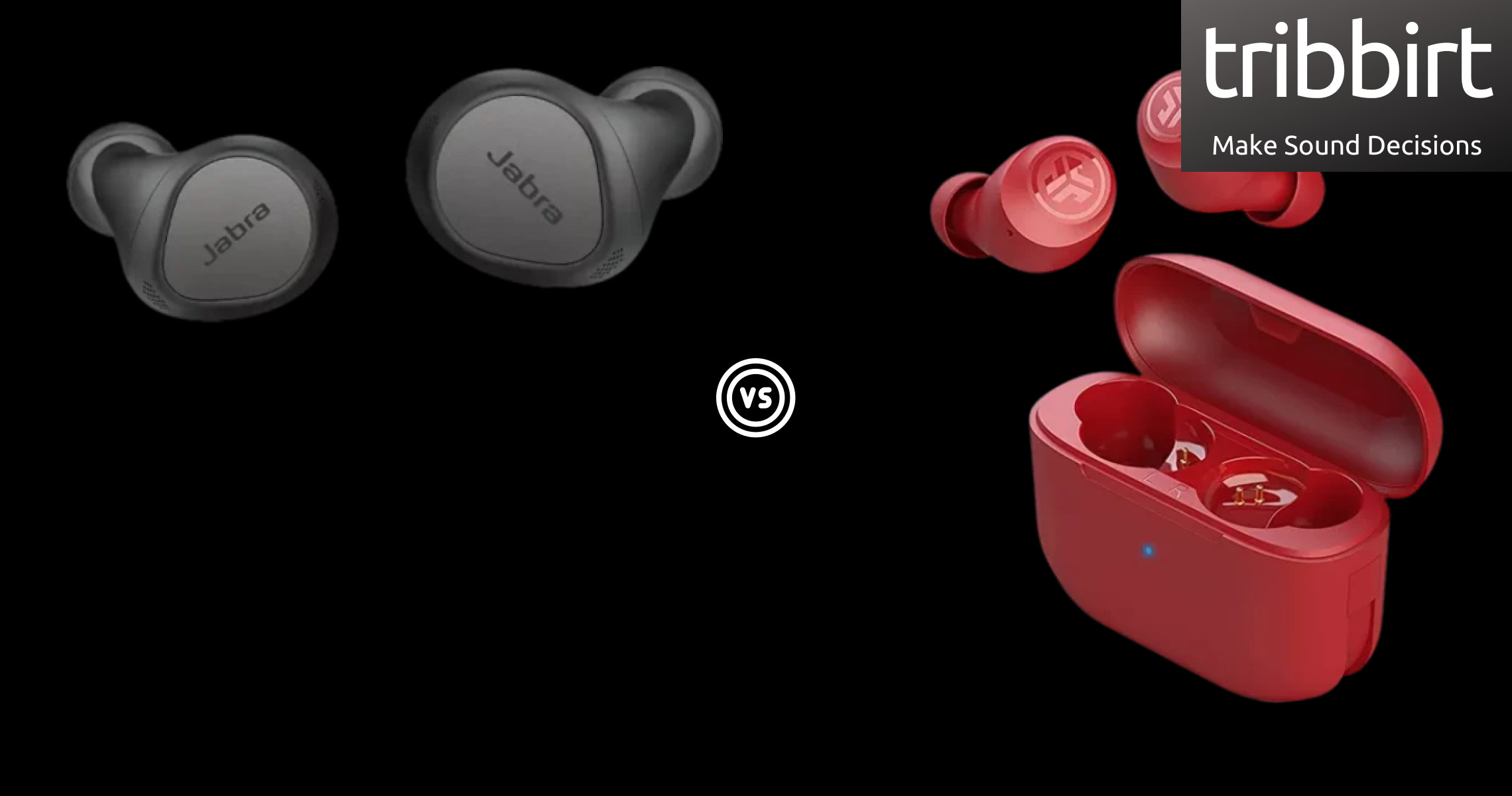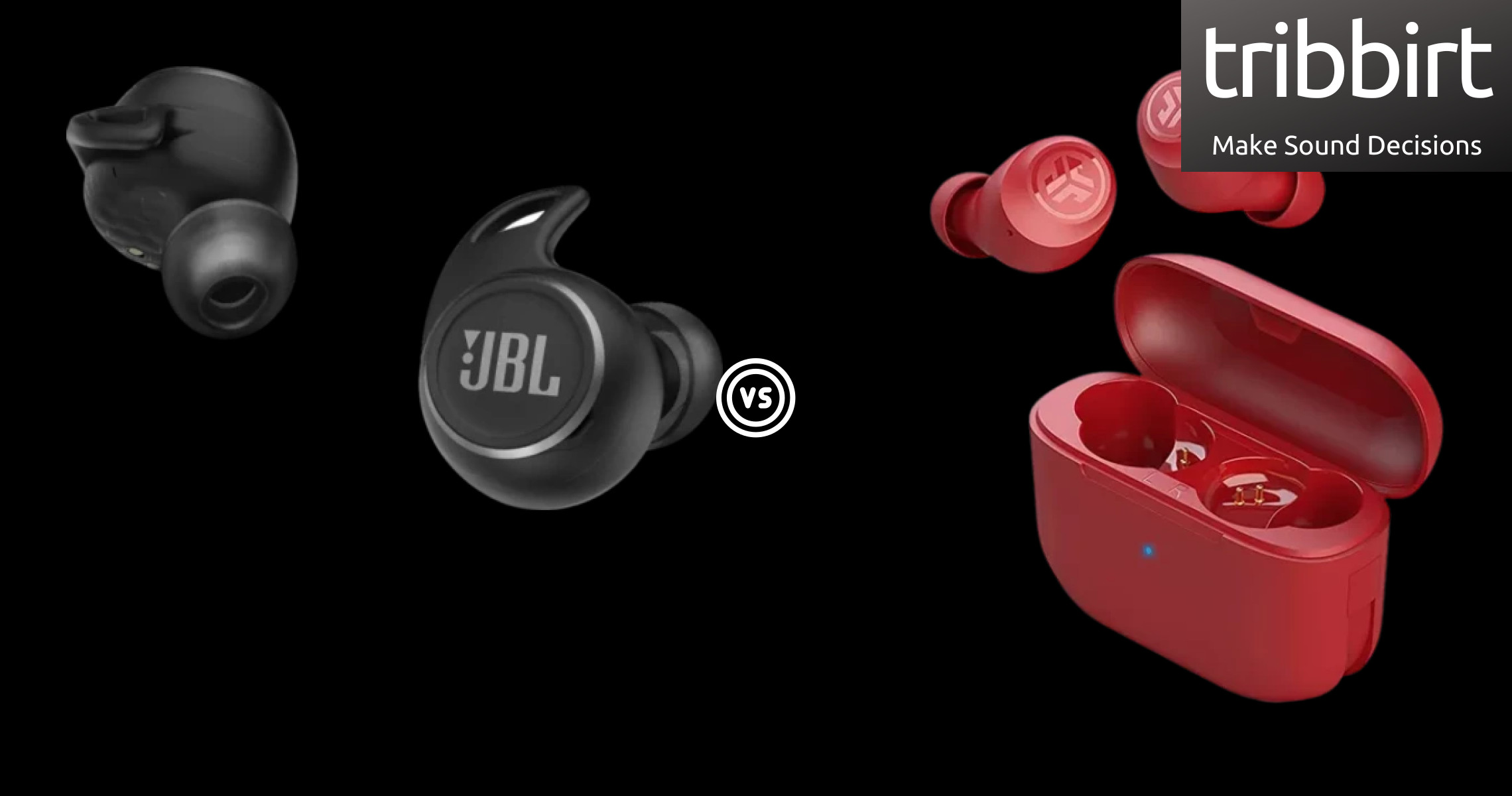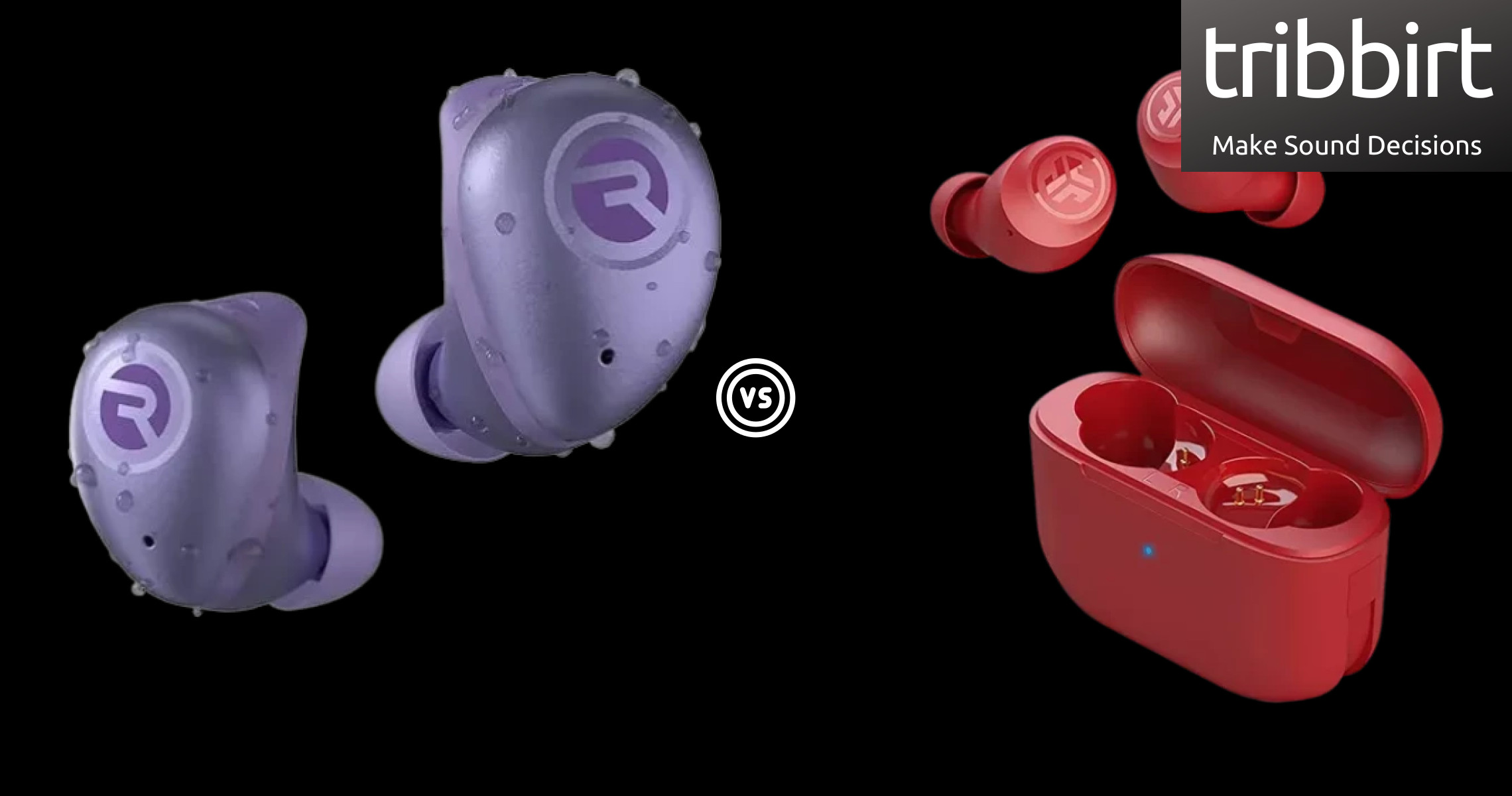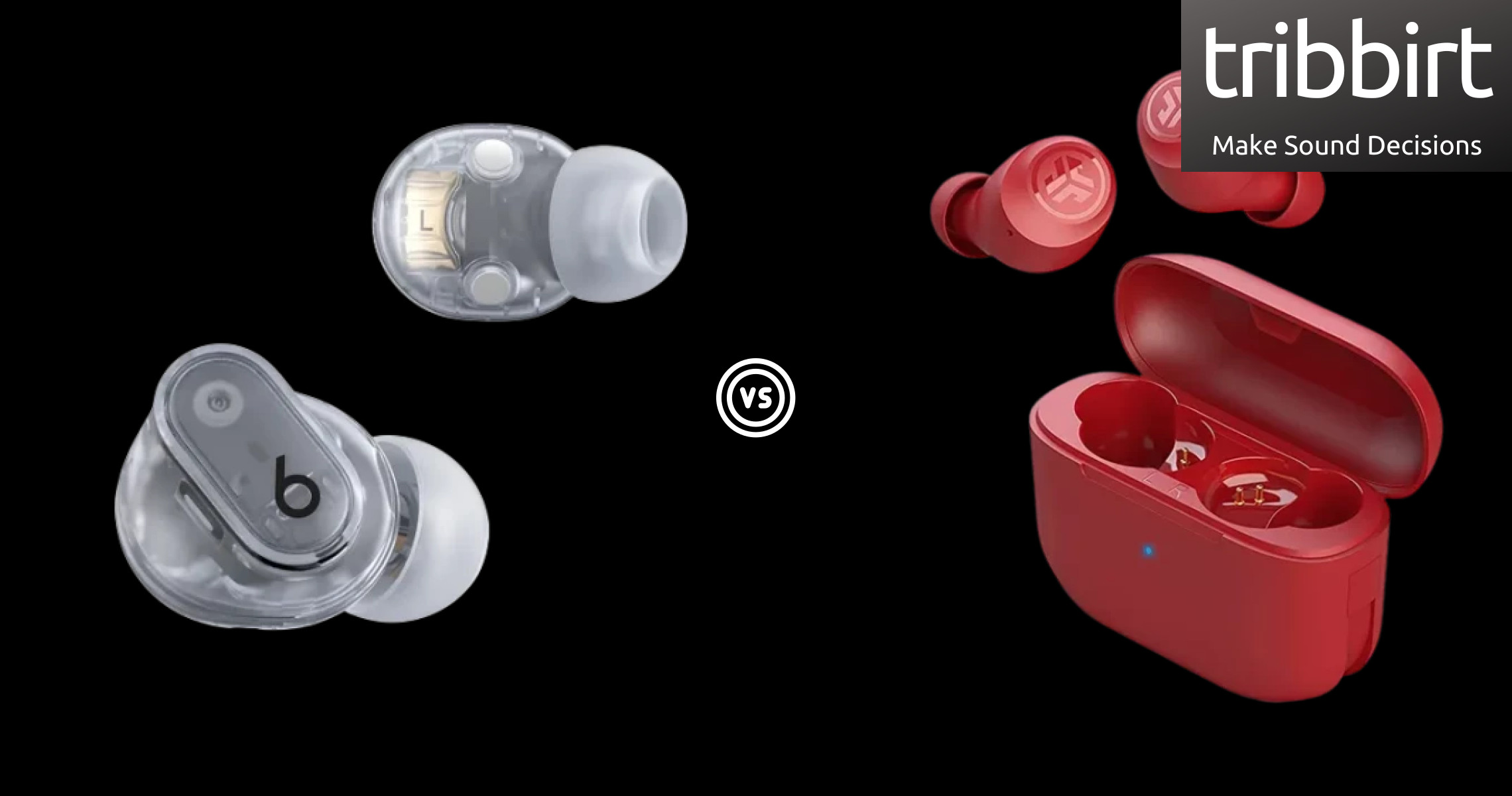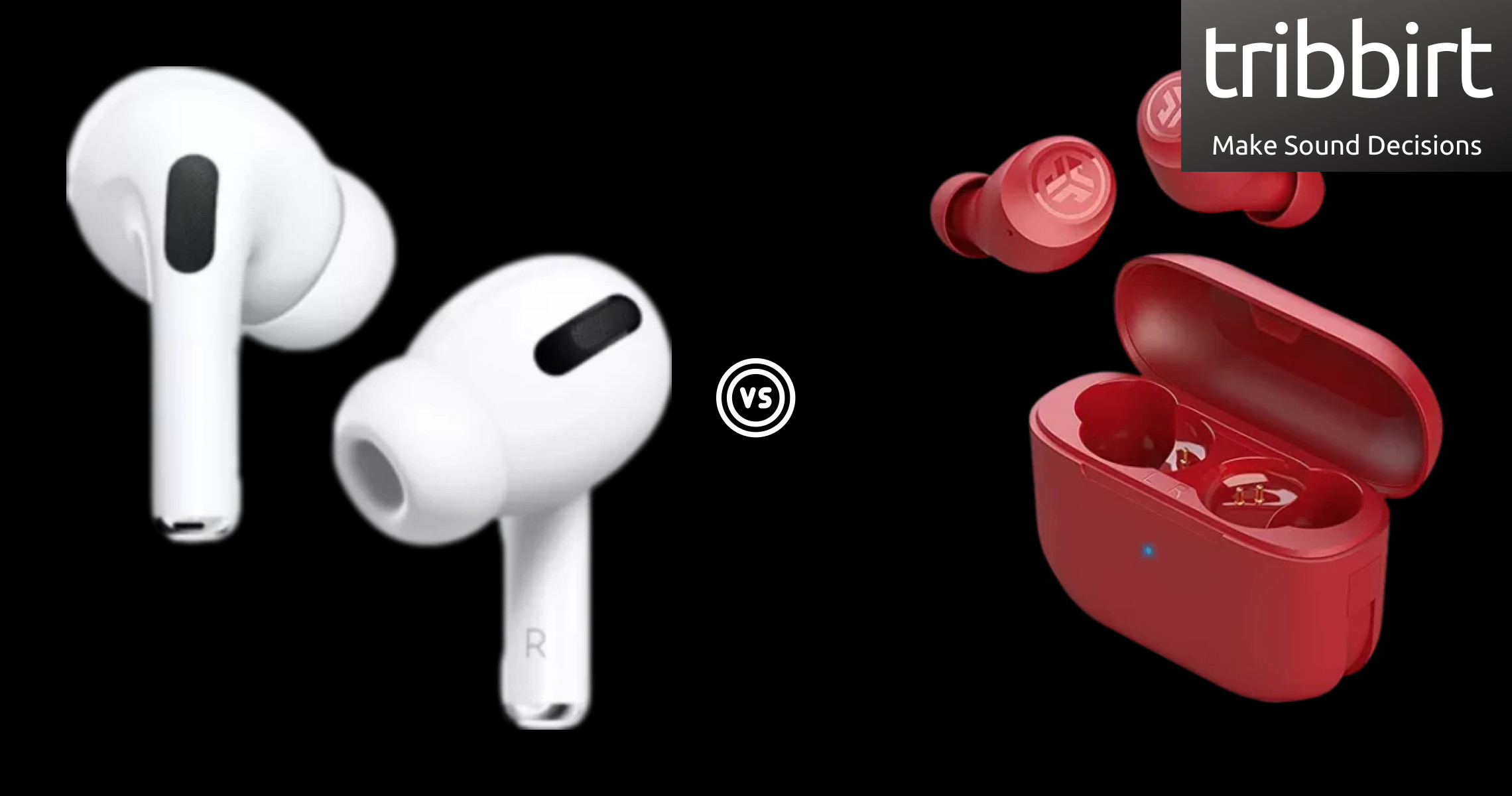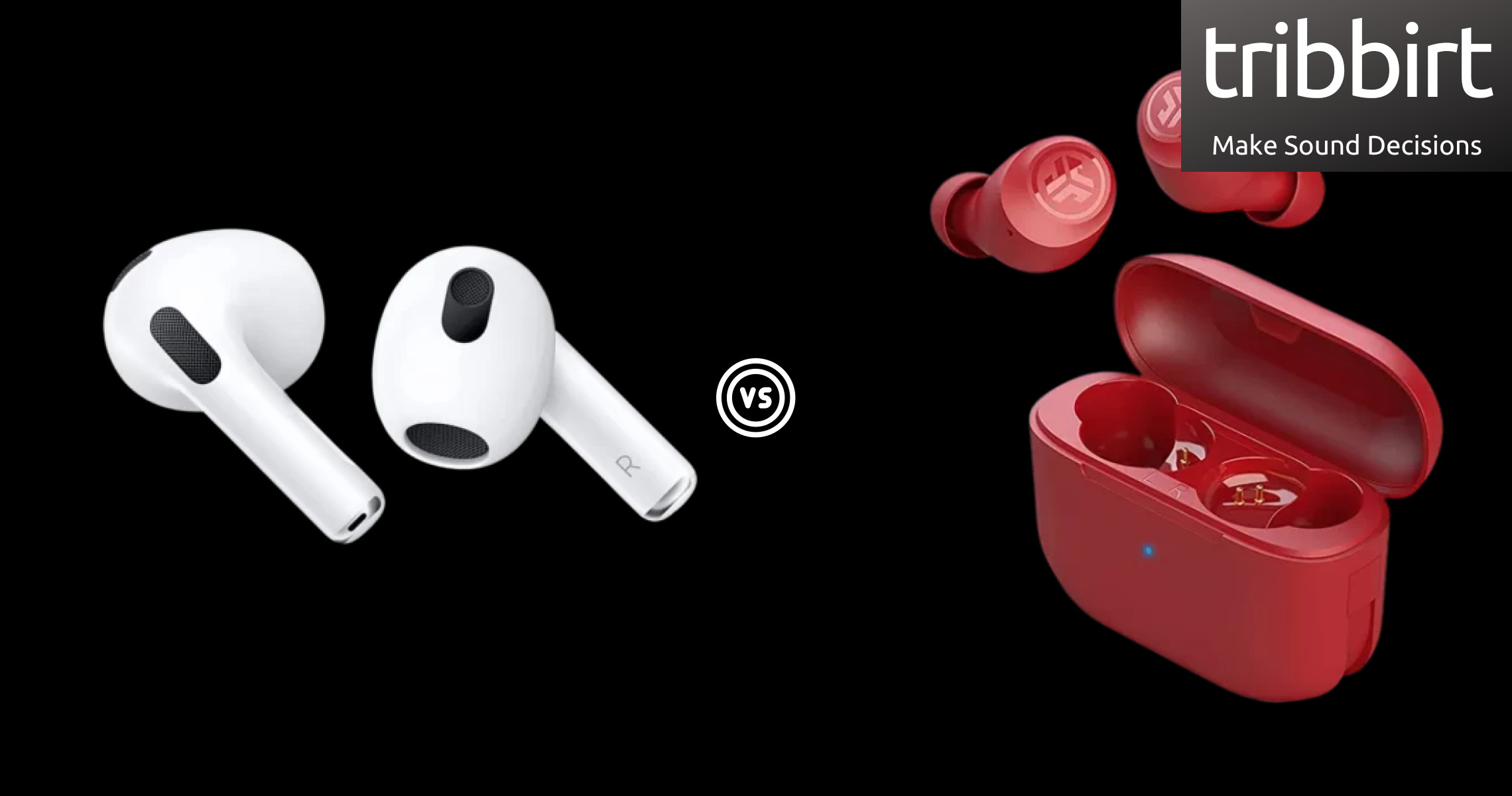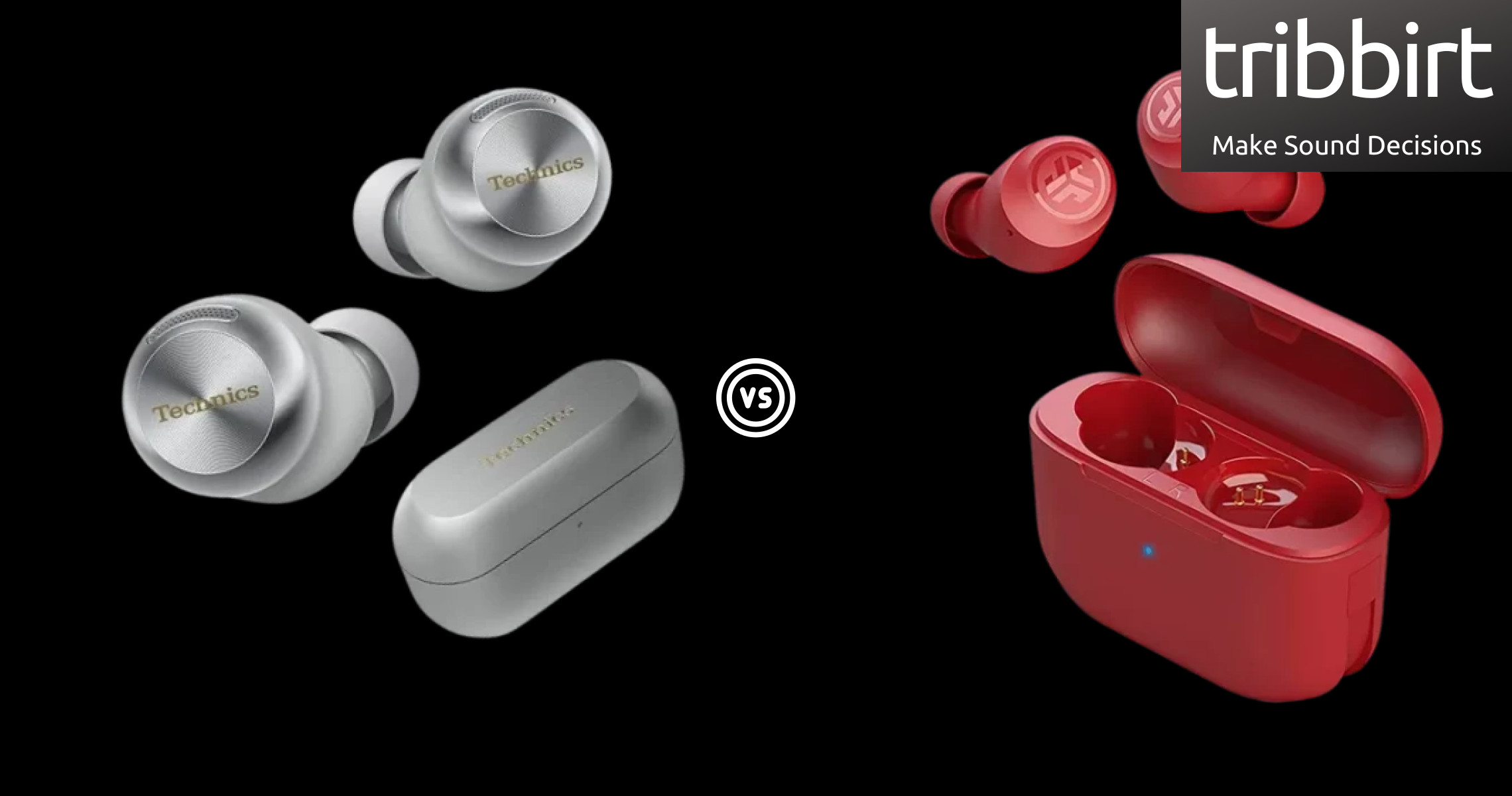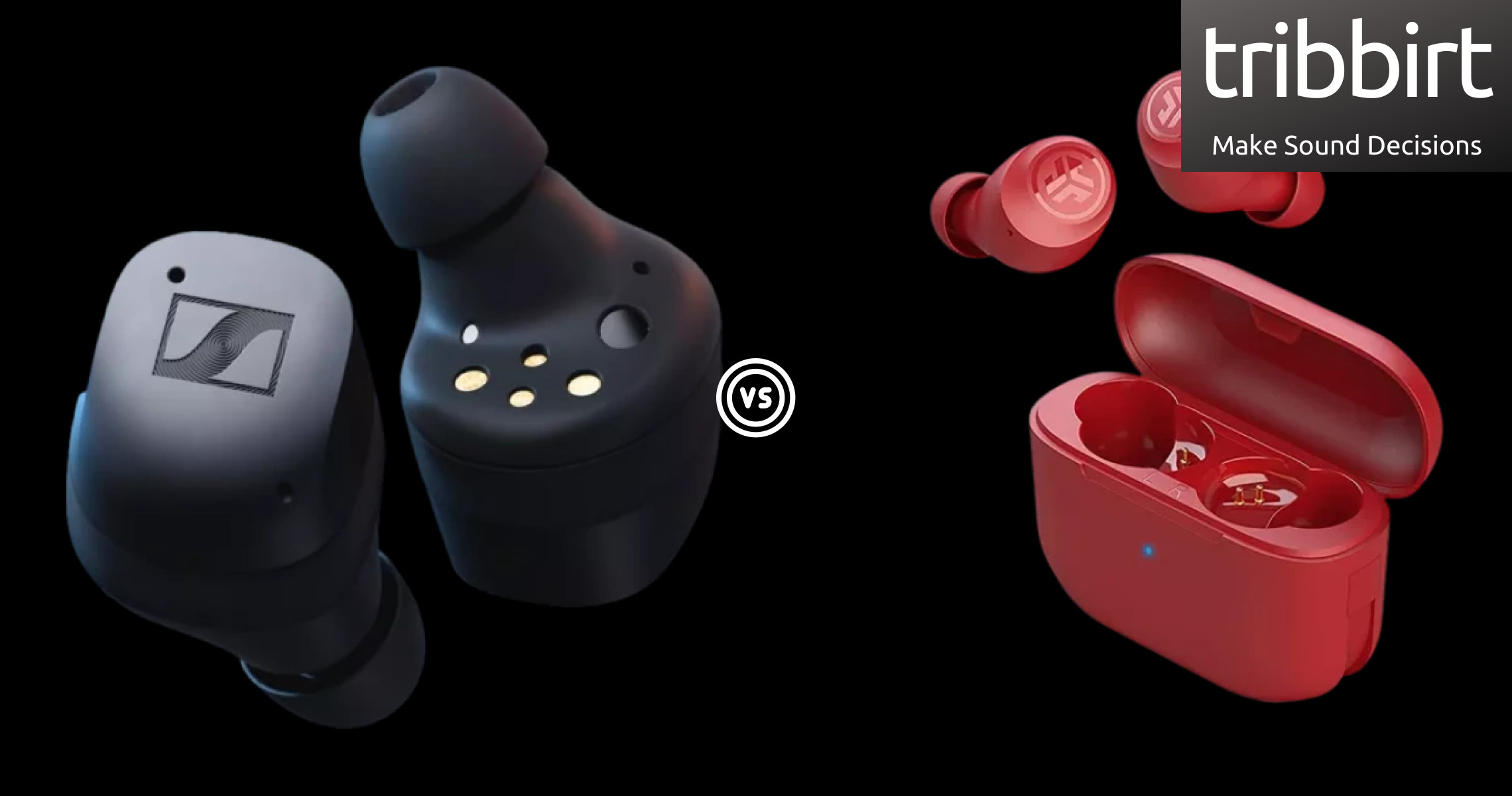Ingress protection ratings refer to the rating of protection offered by a casing, against solids and water. The letters 'IP' are followed by two values The first value refers to protection against solids such as dust, while the second refers to resistance against liquids (water).
Scoring IPX4, the JLab Go Air Pop's rating is read as, the first value of X denotes that no data available to specify a protection rating, and of liquids that they can withstand low pressure spray similar to that of a shower head when tilted at 180° for 10 minutes. In comparison to the JLab Go Air Pop, Nothing Ear 1 have a rating of IPX4 meaning that
we are not yet certain of their rating with solids (dust)
and that of liquids is that,
they both have the same rating against liquids
The JLab Go Air Pop have a weight of 7.4g . We prefer a lower weight best because lighter devices are easier to carry.
Nothing Ear 1, at 9.4g
weigh more than the JLab Go Air Pop with a difference of 2g
True wireless devices have no wires connecting any part of the device together, JLab Go Air Pop are true wireless for this case since they have no cables. This is a major difference since wireless earbuds have cables connecting the pair of earbuds together. Nothing Ear 1 also is true wireless because it doesn't have cables linking the 2 earbuds .
JLab Go Air Pop have sweat resistance
Nothing Ear 1's resistance to sweat makes both devices good for use while doing sports such as long-distance running, marathons, training in workout bodysuits, etc
JLab Go Air Pop have stereo speakers, what this means is that JLab Go Air Pop's speakers deliver sound from independent channels on both left and right sides, this creates a richer sound and a better listening experience.
The Nothing Ear 1 also have stereo speakers
The JLab Go Air Pop stay tightly in place, this creates an acoustic seal that tones down background sounds while preventing the earbuds voice audio from leaking out .
Both of these devices have passive noise reduction which means that they reduce ambient noise instead of actively using ANC to cancel it out. The JLab Go Air Pop driver unit is 6mm in diameter, the bigger the unit the more powerful, therefor producing better bass. A driver unit is basically a mini speaker that produces sound in the earbuds, the unit size determines the loudness of the device.
Nothing Ear 1 driver unit is 11.6mm in diameter,
making them have a larger driver unit than that of JLab Go Air Pop by 5.6mm
, as many tend to believe that driver units of a bigger size automatically produce better sound quality.
However, large drivers usually have difficulty producing high frequencies so it's true that, larger drivers can generate louder sound, but this does not indicate that they produce better quality sound. The JLab Go Air Pop's lowest frequency is at 20Hz, low-frequency response inidcates how well a particular audio component produces low frequencies that can be heard, and if it makes any changes to the signal on its way through.
Nothing Ear 1's lowest frequency is at 20Hz, this implies that
both devices produce equal bass
The JLab Go Air Pop's highest frequency is at 20,000Hz, high-frequency response measures if and how well a particular audio device produces high audible frequencies and if it changes to the signal on its way through. Nothing Ear 1's highest frequency is at 20,000Hz, this implies that
both devices generate equal treble
The sound pressure level, is the pressure level of sound, in decibels, dB, JLab Go Air Pop's measurement is 103dB/mW. Devices with a higher sound pressure level are generally louder when supplied with any given audio source.
The JLab Go Air Pop's battery life is 8 hours, these last longer than 5 hours of listening which is considered average before recharge. A device's battery life is commonly given by the manufacturer, and with longer battery life, you get to use it for longer and requires fewer chargings. Nothing Ear 1's battery life is
less than that of JLab Go Air Pop by 3 hours
. Each time you recharge your device, they get a little less playing time.
The effect is not noticeable at first, but over a few years, your wireless earbuds will have shorter listening time. This is given by the vendor, and JLab Go Air Pop's case is said to have a full charge of 24 hours. A charging case with a longer battery life enables you to recharge your earbuds on the go several times before recharging the case itself.
Nothing Ear 1's charging case has a battery life of 29 hours,
more than that of JLab Go Air Pop by 5 hours
It takes 2.2 hours to fully charge the JLab Go Air Pop's battery. It is recommended to charge fully the battery before using the earbuds when they have been unused for long periods. Nothing Ear 1 takes 1.5 hours to fully charge the battery,
less than that of JLab Go Air Pop by 0.7 hours
JLab Go Air Pop have a battery level indicator, an indicator shows you when the device has a low battery.
The battery indicator lights indicate the charging status of your device and case. Nothing Ear 1 too have a battery level indicator, charging indicators enable you to tell the charging state of your device, whether fully charged, or the battery is running low. JLab Go Air Pop support USB TYPE-C, an industry-standard connector for transmitting both data and power through a single cable.
Nothing Ear 1 too have USB TYPE-C. This USB-C plug is part and parcel of most current electronics. JLab Go Air Pop have Bluetooth version of 5.1, Bluetooth is a wireless technology standard that allows data movement between devices placed in close proximity, using short-wavelength, ultra-high frequency radio waves.
Nothing Ear 1 has a Bluetooth version of 5.2,
newer than that of JLab Go Air Pop
. Newer versions provide faster data transfers. JLab Go Air Pop have a 10meters distance connecting via Bluetooth. Nothing Ear 1 have a maximum range of 10meters,
equal to that of the JLab Go Air Pop
JLab Go Air Pop support AAC, a codec that is used for Bluetooth audio.
It supports 24-bit audio at 250kbps. Because it uses psychoacoustic modeling, it can provide better results than other codecs at a similar bit rate.
Since its the highest quality codec that any Bluetooth-supporting Apple product supports, the JLab Go Air Pop will work well with your MacBook.
If you are planning on using these with Android , ensure that they also support aptX HD, LDAC, or LHDC as well. JLab Go Air Pop have 2 microphones. The Nothing Ear 1 microphones are 6,
more than that of JLab Go Air Pop by 4
. More microphones result in better sound quality and help the device to filter out noise.
JLab Go Air Pop microphone sensitivity is measured at -42dBV/Pa. The size of the analog or digital output signal from the microphone with its input stimulus is a calculation of its sensitivity. It's the 'loudness' of the sound that the microphone can recognize.
JLab Go Air Pop support fast charging. Usually, technologies like Qualcomm’s Quick Charge, are used to reduce the amount of time it takes to charge a device. The Nothing Ear 1 too support fast charging.
It's very similar to regular charging, only that the battery fills up much faster. Say, with Quick Charge 3.0, the battery can be charged to 50% in just 30 minutes. The JLab Go Air Pop have a mute function, they have the option to mute/unmute a conversation directly from the device.
With the JLab Go Air Pop, so you can access the volume control, pause, play, mute, etc whichever functions are supported on the device. Nothing Ear 1 too have a control panel on them. JLab Go Air Pop have a warranty period of 2 Years, the period of time that warrant free repair and adjustment services in case of a malfunction occurring under normal use that has followed instruction manuals.
When covered under the manufacturer’s warranty it is possible to get a replacement in the case of a malfunction. Nothing Ear 1 have a warranty period of 1Years,
less than that of JLab Go Air Pop by 1 Years
.
JLab Go Air Pop support voice prompts. With voice prompts, you receive information through audio messages, say if there is a problem with the connection.
Nothing Ear 1 also support voice prompts .i.e the device will notify you when the battery is low, and it's time to recharge them. JLab Go Air Pop come with their own special case. Carrying earphones openly, or putting them inside your bag without a cover can easily put them at risk of getting damaged.
Nothing Ear 1 also have a case included, which offers safe transportation.
